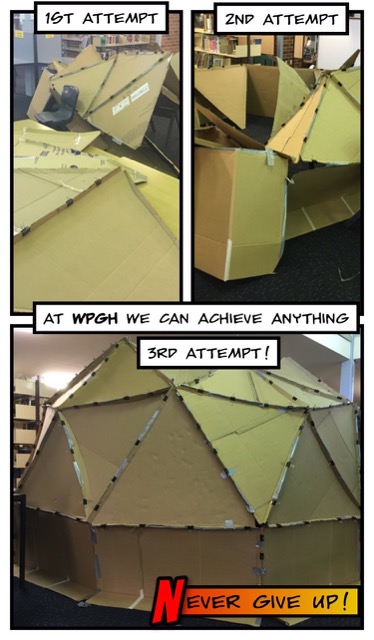by Andrew Fazekas, AWB Communications Manager
- Created: Tuesday, July 04 2017 16:03
 Whatever country or culture across the world, science teachers traditionally have a challenging road ahead of them each year when it comes to having their students embrace science, technology, engineering and math or (STEM education). The ultimate goal is to not only make learning more enjoyable but also keep the students motivated. And this is exactly what Murray Henstock, science teacher at Wiley Park Girls High School in New South Wales, Australia believes he has managed to tap into using astronomy and a fun planetarium initiative as the perfect springboard.
Whatever country or culture across the world, science teachers traditionally have a challenging road ahead of them each year when it comes to having their students embrace science, technology, engineering and math or (STEM education). The ultimate goal is to not only make learning more enjoyable but also keep the students motivated. And this is exactly what Murray Henstock, science teacher at Wiley Park Girls High School in New South Wales, Australia believes he has managed to tap into using astronomy and a fun planetarium initiative as the perfect springboard.
But Henstock’s school has more than its fair share of challenges to deal when it comes to bringing STEM into his classrooms. The all girl school is located in a low socio-economic part of town where the vast majority of the student population consists of mostly of newly arrived refugees, minority groups with poor literacy rates. So opportunities to learn about STEM fields, sadly, usually fall by the wayside.
“The school... has a very diverse population with 97% of students from non-english speaking backgrounds, including a high population of refugees,” explained Henstock. “Literacy and an interest in the sciences is often low and these programs are an attempt to engage both students and the community in developing STEM skills and instilling a love of learning and critical thinking.”
In 2016 Henstock attempted to have his students make an indoor planetarium based on nothing more than inexpensive, recycled pieces of cardboard that would fit a class of students.
“The idea was [for the children] to become immersed in a learning environment that could not only allow them to explore astronomy but also offer other immersive environments that could be projected,” said Henstock.
However after 6 months of hard work with countless hours of student and teacher volunteer hours they succeeded to build the dome, however sadly the structure collapsed shortly after completion. While definite disappointment for the school, Henstock used this exercise as a valuable learning opportunity for his students.
“Completing the planetarium was a step to show what could be done with perseverance and determination and involved a very large STEM component as well as problem solving, leadership and teamwork,” he said.
And for both students and teachers this initial setback has only spurred both students and teachers on to continue pursuing the project and make the classroom planetarium a reality. Henstock and his team is now looking to purchase a collapsible, transportable geodesic dome kit with reflective material but need help to raise funds.
“This will allow our learning spaces to become much more interactive and immersive and provide not just a daytime school resource but one we can offer out to the community through regular Astronomy Nights held at the school,” said Henstock.
This is where AWB’s BIG (Big Impact Giving) online crowdfunding campaign comes in. This past June we launched the basic campaign to raise funds to purchase the basic dome kit for the girls school. We are happy to report to have been successful at reaching the basic funding goals, and have made this project a reality!
But now we are looking to attain a series of stretch goals to turn it into a high quality enduring astronomical resource for the school and the surrounding community. Wiley Park Girls High School is looking for modest extra funds to help cover postage costs for all purchased materials, an upgrade to the internal surface to make it a reflective white nylon for better viewing of constellations, and perhaps adding in a plastic weatherproof cover.
The girl’s school has already proven that astronomy has created amazing opportunities to link the school to community in that it has been continually sparking interest in the sciences as well as generating a sense of wonder amongst the community that encourages further learning.
“We had parents and students [look through telescopes] who had never seen the planets before and we were even lucky enough to show them a glimpse at another galaxy,” said Henstock.
“Since that time I have sought ways to increase the connection with not just the community but also the local primary schools. It is my aim to develop a centre of learning within the school that can eventually become a resource for the students, their families, members of the community, local primary schools and other high schools in the area.”
Check out our BIG campaign page and consider supporting this worthy STEM education project for girls.







